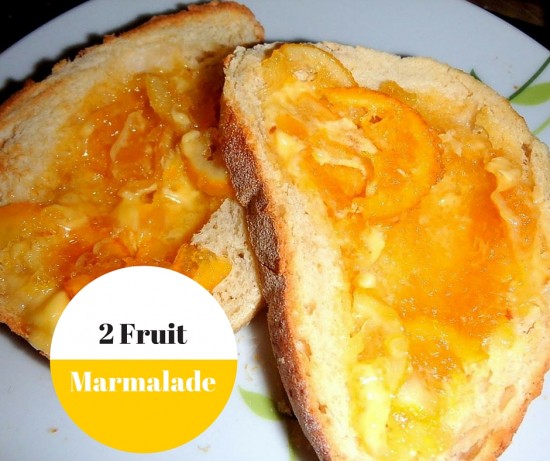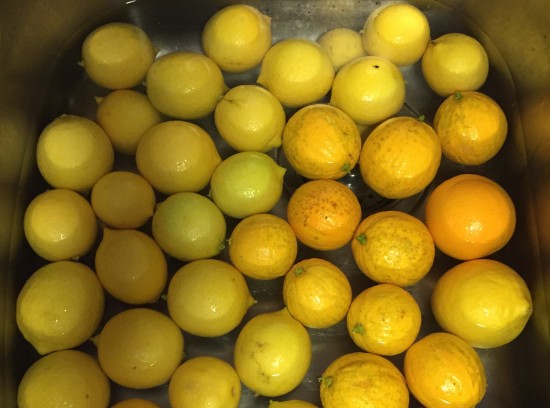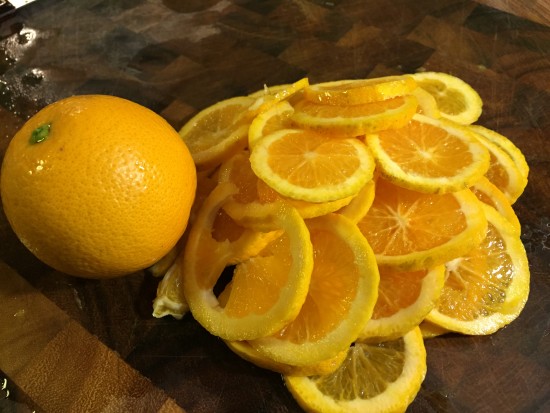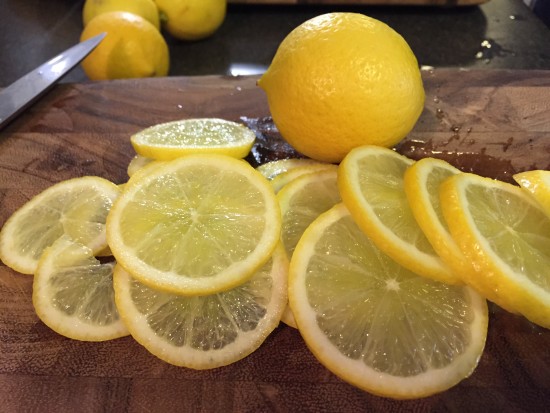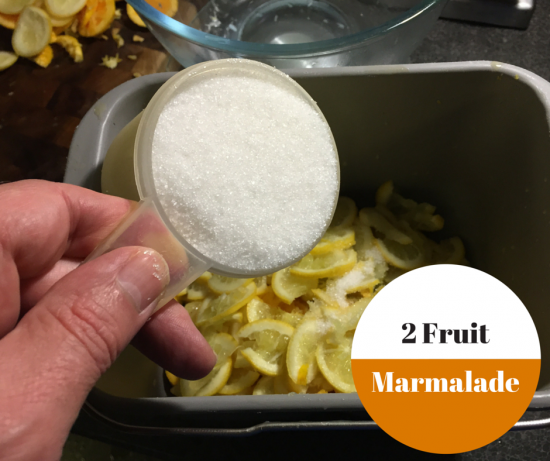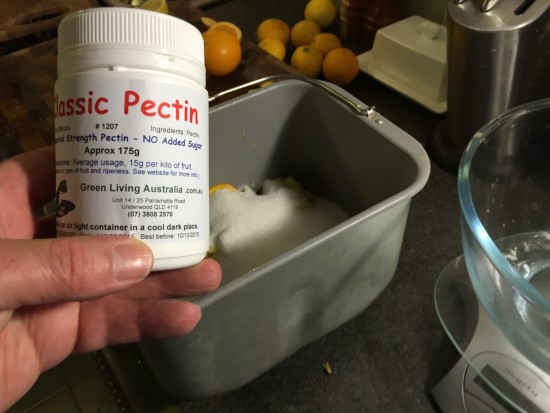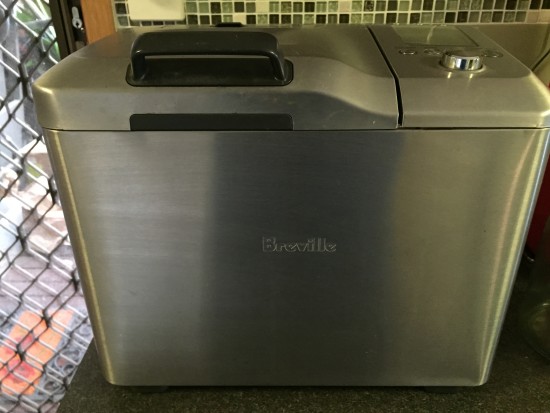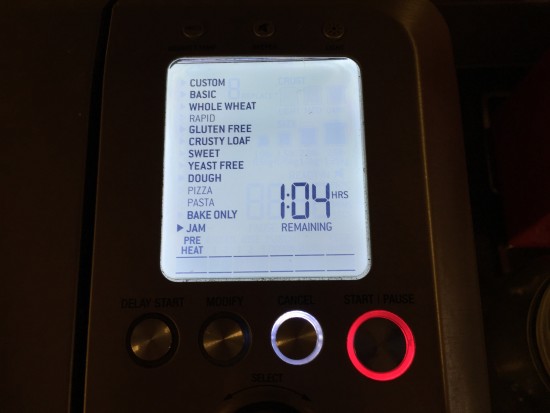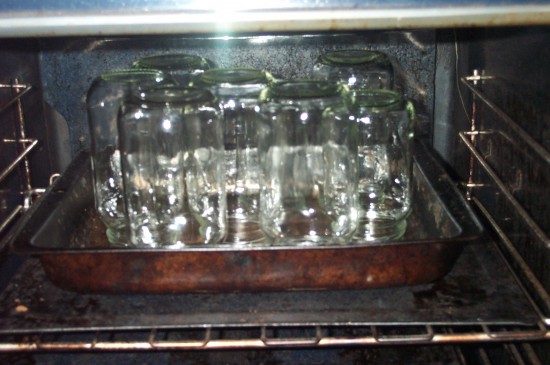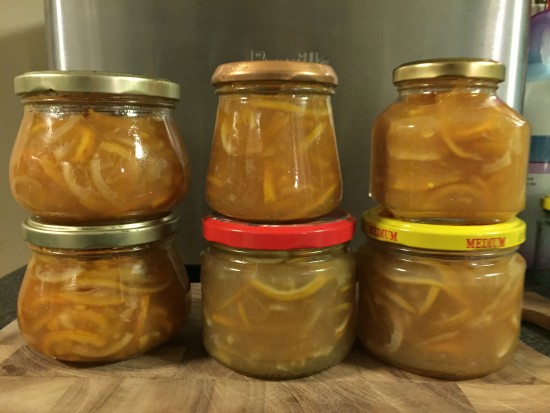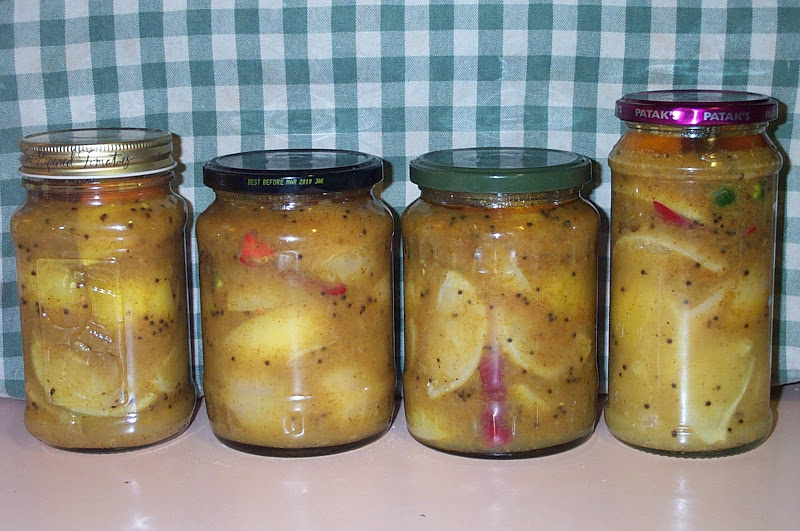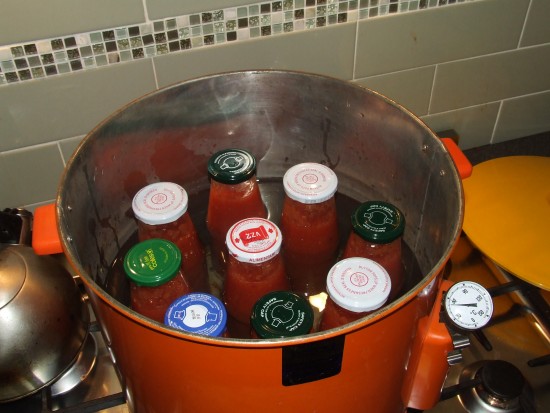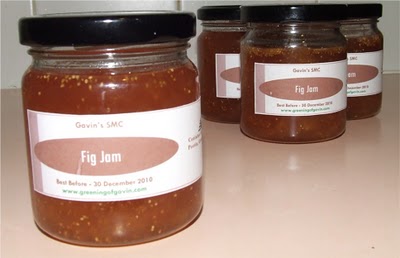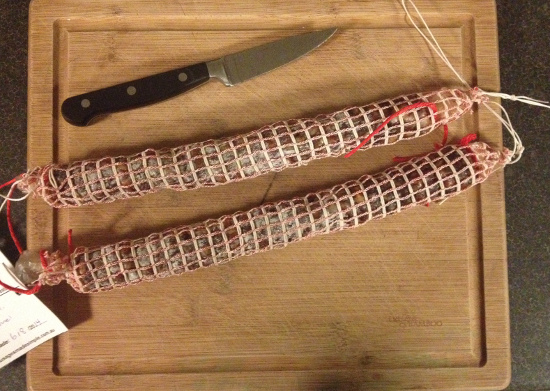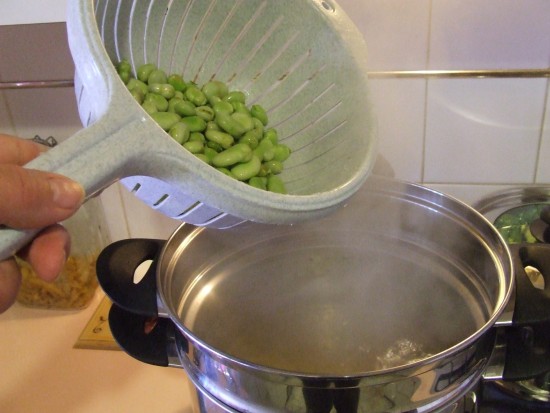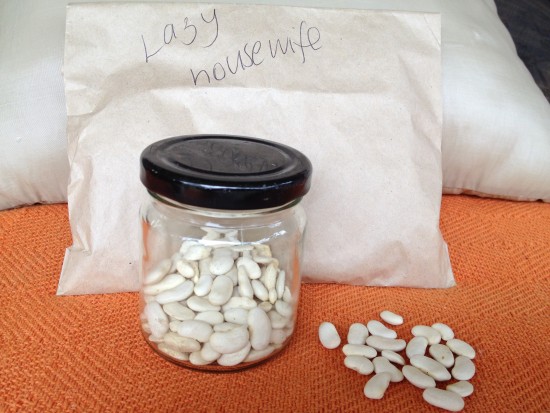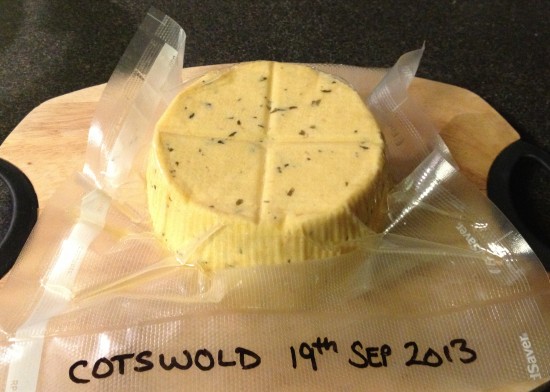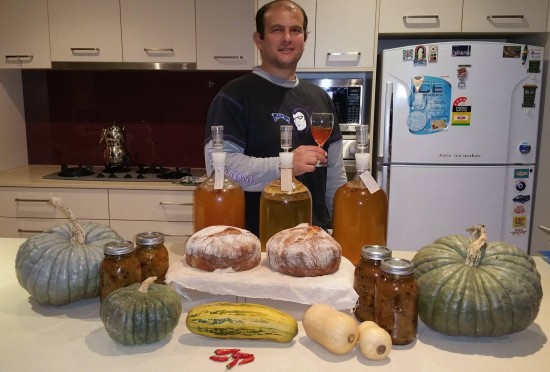I remember eating 2 Fruit Marmalade when I was a kid. I also remember not liking it very much as it was always too tart and bitter. I can’t remember who in the family used to make it, but something was not quite right with either my fledgling palate or the recipe. It was probably my young taste buds as all the adults seems to love it!
Now Kim raves about this brand of Marmalade she used to eat in the UK (Roses), and wanted to know if we could make our own. I mentioned to her that we made some a while back and I was the only one that ate it, and asked if she wanted to learn how to make a 2 fruit marmalade with the excess citrus we had on the citrus trees that we grow in pots.
She was very excited at the prospect, so here is the recipe and method I taught her yesterday. The one vital piece of equipment you’ll need, and may already have, is a bread maker. Yes friends, we are making 2 Fruit Marmalade in a bread maker! Just make sure it has a jam setting before you start making this delicious preserve (most of them do these days).
2 Fruit Marmalade
Ingredients
- 250 gm sliced Navel Oranges
- 250 gm sliced Tahitian Limes
- 1 and 2/3 cups of white sugar
- 1 level Tablespoon Classic Pectin
Method
1. Pick your fruit from your tree. Wash fruit in your sink, half full of warm water with 1 cup of white vinegar added. This will help remove any dirt, bacteria, or wax (if commercially bought). Dry the fruit with a tea towel.
2. Slice the oranges thinly, then cut in half. They should be half-moon shaped. Remove any seeds that may be present as well as large chunks of the centre pith.
3. Slice the limes and cut in half. You will notice that my limes are slightly yellow. Well it is a little know fact that limes do indeed turn from green to yellow when they are ripe!
4. Add your limes into the bread maker pan then add the sugar.
5. Then add the pectin. We used classic pectin that has no added sugar, unlike Jamsetta. Plus you can reuse the container it comes in when empty!
6. Then place the pan into the bread maker as per your machines instructions.
7. Set the bread maker to the jam setting, and press start.
8. In the mean time, whilst the 2 Fruit Marmalade is cooking, wash and rinse some jars and lids. We found that each batch fit perfectly into two 300 gm Salsa jars (empty of course). Make sure the lids are in good condition with no sign of rust or stained plastic seal in the inside. If in doubt, order in some new lids. If you don’t have all the gear you need, you can find preserving equipment and supplies in our online shop.
9. Place the still wet jars upside down on a baking tray, and place in a preheated oven at 120°C (250°F) for 20 minutes. This sterilize the jars. To sterilize the lids, place them in a Pyrex jug and pour in boiling water and sit for 5 minutes.
10. Once the 2 Fruit Marmalade is cooked, pour it into hot jars. Wipe any spills with a clean damp tea towel and seal the lids on tight. We use the lids that have pop buttons so we can ensure we have a vacuum seal. As the jars and contents cool, the button pops in. For any jars that didn’t seal correctly, store in the fridge and eat that jar first.
For the remainder, wipe clean with a clean damp cloth, and store in a cool dark pantry until ready to consume. Will keep for at least 12 months.
Now there is a variation on this recipe that we also tried. In the above photo, you will note that two of the bottom jars of marmalade are a slightly different colour (bottom centre and right). Well they are actually 100% Lime Marmalade. To make this, just use 500 gm (1.1 lbs) of fresh limes instead of the combination of oranges and limes. This makes a more tart Marmalade, which is a delicious alternative.
So there you have it. 2 Fruit Marmalade, made with citrus grown here on our suburban food farm!
I am so glad my taste buds matured. This marmalade is amazing.

